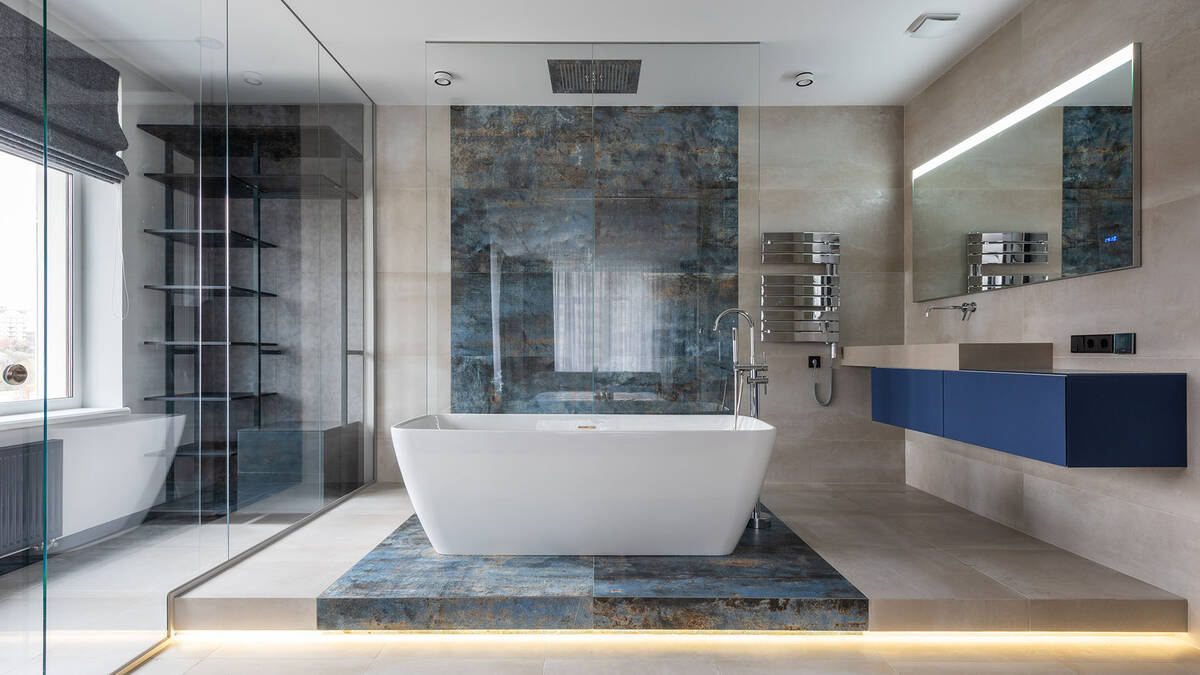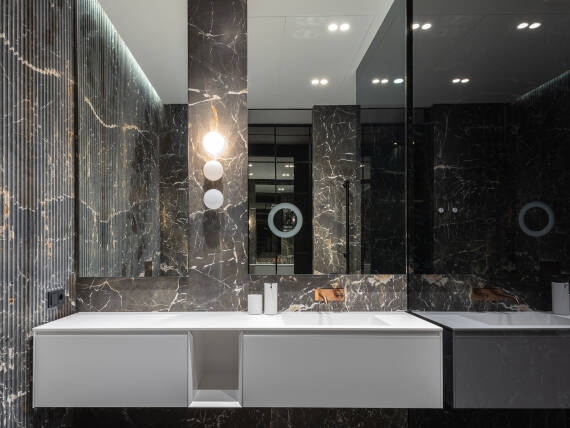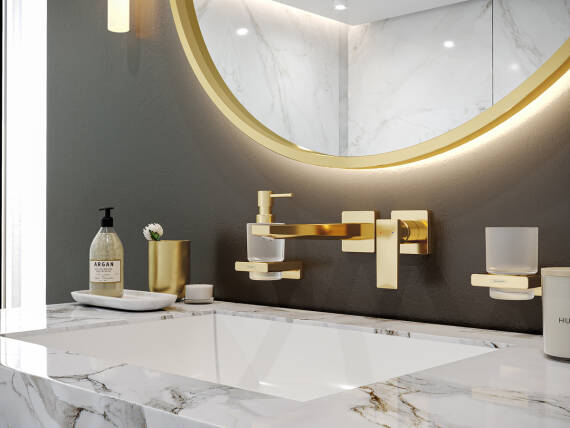Marble is aesthetics and functionality
The bathroom as a luxury space: Marble as a design feature for design lovers
Marble is a fascinating material. Its aesthetics are captivating. Its functionality has won people over for more than two and a half millennia. In upscale interior design, the premium natural stone is perfectly processed into a design delight. In the bathroom, marble is luxury for the everyday.

Marble in the bathroom: Multiple options for use
Marble is robust, easy to clean, and versatile. It can be adapted to a room’s interior design with millimeter precision. This also means there all kinds of uses for marble in the bathroom:
- As a countertop
- As a sink
- As a floor covering
- As a wall covering
- As a windowsill
Each stone slab is thereby unique. Marble makes your bathroom a very personal matter.
A quick trip through history
Marble played an important role even in ancient times. Historical masterpieces in art and architecture, such as the Venus de Milo and the Acropolis were made from it. During the Italian Renaissance, the white marble from Carrara inspired sculptors. Michelangelo used it to create his “Pieta,” among other things.
Marble embodies monumentality and luxury in every style era. In interior design, Carrara marble is still the measure of all things today. It lined the entrance hall of the World Trade Center.
It makes the atrium of the new One World Trade Center shine in white. For the spectacular portal to the “Ground Zero” subway station below, however, star architect Santiago Calatrava relied on materials from South Tyrol.
Hundreds of types of marble – each delightful in its own right

Marble lends itself to a wide variety of finishes: grinding, polishing, satin finishing, brushing. Unfinished, it has a captivating, “ancient” look and feel. But what makes marble a versatile design element in the bathroom is that there are many different types – and they all have their own individual appeal:
- The classic Carrara Bianco impresses with its radiant white color. Depending on the mineralization, it shows colored marbling. Design tip: Choose a structured variant and set pure white accents.
- Black is beautiful. With Nero Marquina in the bathroom, it’s also exciting. The black stone has a striking white grain. Set it off with colorful decorative elements.
- Verde Guatemala is cool, elegant, and deep dark green. Its calm appearance makes it ideal for large-format wall surfaces. It adds noblesse to your bathroom – especially if you combine it with gold or brass.
- The brown Marron Emperador brings warm earth tones and harmony to your bathroom. Use it as a contrast to light furniture or surfaces.
Over 50 types of marble are quarried in Carrara alone – in all shades and hues. Hundreds of other types of marble come from quarries around the world. However you imagine your luxury marble bathroom, there are almost no limits to what you can achieve.
Marble in the bathroom: Pros & cons
There’s no material like marble. Marble surfaces have a unique texture. Their natural brilliance will round out any bathroom design. Marble is luxury. But it has its price.
As a design element, this elegant natural stone offers many application options. Marble tiles are available in any format. Each element has its own individual grain. This gives marble surfaces their very special aesthetic.
Marble tiles in bathrooms and showers also have advantages from a functional point of view: they are easy to clean and very hygienic. As a floor covering, they also show less wear than ceramic tiles or wood.
At its core, marble is perfect for use in wet spaces. However, it does need some care. It does not do well when liquid stays standing on the surface for long periods of time. So have marble in your bathroom regularly polished and sealed. Also: Marble looks its most upscale when smoothed and polished. However, it is slippery when wet. Special surface treatments offer a solution here.
A material that makes the difference!
As a design element, marble meets the highest standards in terms of aesthetics and functionality. In daily use, it is easy to care for if treated properly. And: Marble opens up a world of possibilities. As a material created by Mother Nature, it is available in a wide variety of types and price ranges.Frequently asked questions about using marble in the bathroom
Marble has a natural brilliance and a unique texture. No two marble elements are the same.
There are hundreds of types of marble. The most famous are Carrara Bianco, Verde Guatemala, Nero Marquina, and Marron Emperador.
Marble can be used as wall cladding and flooring, or processed into lavatory countertops or sinks.
Marble is durable, easy to clean and, with its special aesthetics, the perfect material for discerning design lovers.
Marble needs proper care and has to be polished and sealed regularly. As a material for bathrooms, it is rather expensive.

Luxury design element for the most demanding requirements
Set an even more stylish scene for your marble with high-quality faucets.
Be inspired!
Trusted partners